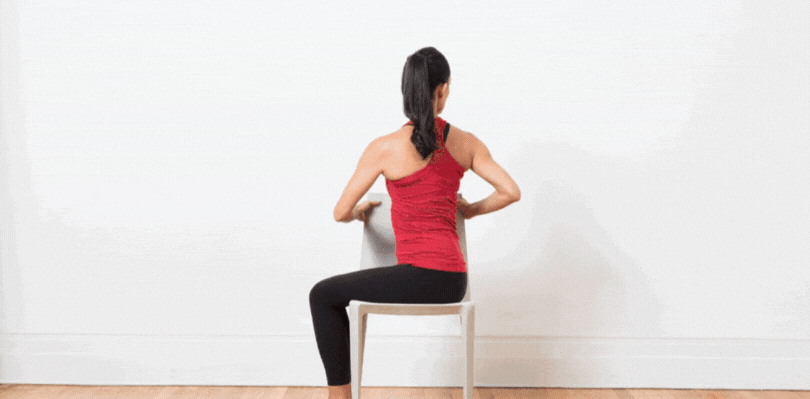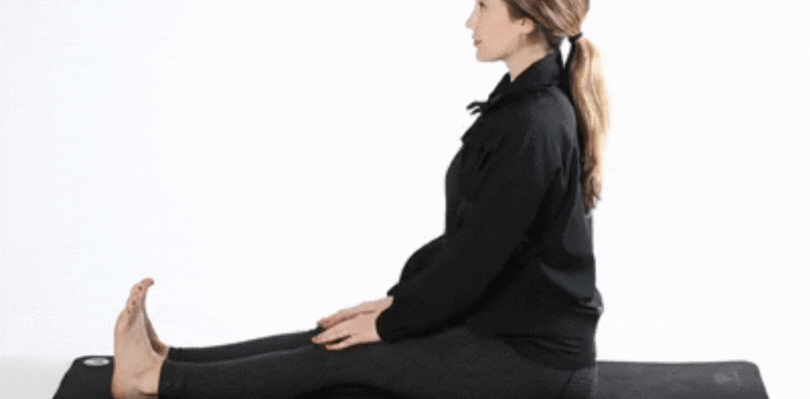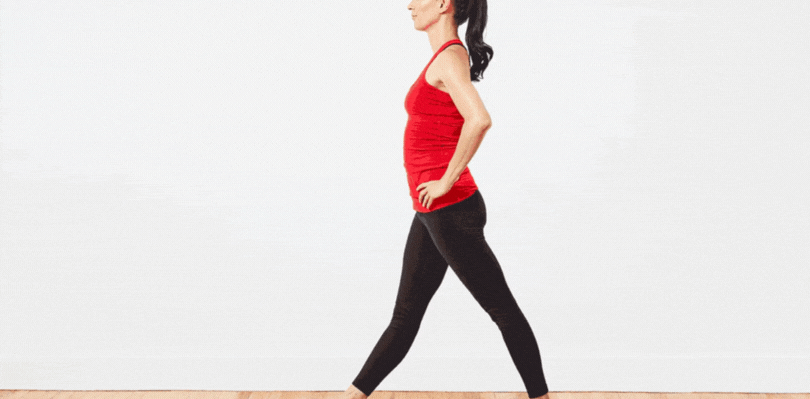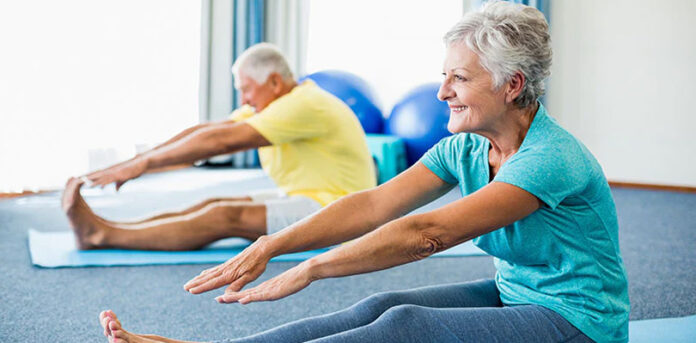Stretching exercises are a low-impact, low-risk form of exercise that can offer significant benefits to seniors. By incorporating stretching into their daily routine, seniors can help to improve their physical and mental health and enjoy a higher quality of life as they age.
Aging is a natural part of life, but it doesn’t mean that you have to slow down or stop doing the things you love. In fact, staying active and mobile can help seniors maintain their independence and quality of life for longer. Stretching is one of the most effective and accessible forms of exercise for seniors, as it can help improve flexibility, mobility, and overall physical health.
In this post, we will share some great stretching exercises that seniors can do at home, with minimal equipment or experience required. Whether you’re looking to prevent falls, reduce joint pain, or simply feel better in your own body, these stretching routines will provide you with a great starting point. So let’s get ready to stretch, move, and live better!
Stretching Exercises For Seniors
As we age, our bodies naturally undergo a number of changes that can affect our mobility and overall health. However, regular stretching can help seniors maintain their flexibility, balance, and range of motion, reducing the risk of falls and injuries, and enhancing overall well-being. Here are six stretching exercises that are particularly beneficial for seniors:
Neck Stretch

Sit or stand tall, and slowly turn your head to the right until you feel a gentle stretch on the left side of your neck. Hold for 10 to 15 seconds, and then repeat on the other side.
Shoulder Rolls

Sit or stand tall, and slowly lift your shoulders up towards your ears, then roll them back and down. Repeat for 10 to 15 reps.
Seated Spinal Twist

Sit on a chair with your feet flat on the floor, and gently twist your upper body to the right, placing your left hand on your right knee and your right hand behind you. Hold for 10 to 15 seconds, and then repeat on the other side.
Hamstring Stretch

Sit on a chair with one leg extended straight in front of you, and gently lean forward from your hips until you feel a stretch in the back of your thigh. Hold for 10 to 15 seconds, and then repeat on the other leg.
Quadriceps Stretch

Stand facing a chair or counter, and hold onto it for balance. Lift one foot behind you, and gently grab your ankle with your hand. Pull your heel towards your buttocks until you feel a stretch in the front of your thigh. Hold for 10 to 15 seconds, and then repeat on the other leg.
Calf Stretch

Stand facing a wall and place your hands on it for support. Step one foot back, keeping both heels on the ground. Gently lean forward until you feel a stretch in your calf muscle. Hold for 10 to 15 seconds, and then repeat on the other leg.
Remember to breathe deeply and relax into each stretch, and never push yourself beyond your comfort level. Regular stretching can help seniors stay active, healthy, and happy, so try to incorporate these exercises into your daily routine.
Benefits Of Stretching Exercises For Seniors
Stretching exercises offer numerous benefits to seniors, helping them to maintain their physical and mental health as they age. Here are six benefits of stretching exercises for seniors:
Improved Flexibility
As we age, our muscles and joints naturally become stiffer, which can limit our range of motion and make everyday tasks more difficult. Stretching exercises can help to improve flexibility, making it easier to move and perform daily activities.
Increased Balance And Coordination
Falls are a major concern for seniors, and poor balance and coordination can increase the risk of falls and injuries. Regular stretching exercises can improve balance and stability, reducing the likelihood of falls and improving overall safety.
Reduced Joint Pain
Arthritis and other joint conditions are common in seniors, causing pain and stiffness that can make movement uncomfortable. Stretching exercises can help to reduce joint pain and stiffness by increasing circulation and promoting flexibility.
Enhanced Mental Well-Being
Exercise has been shown to have numerous mental health benefits, including reduced stress, anxiety, and depression. Stretching exercises are a gentle and accessible form of exercise that can help to improve mood and enhance overall mental well-being.
Improved Posture
Poor posture can cause a range of health problems, including back pain, neck pain, and headaches. Stretching exercises can help to improve posture by strengthening the muscles that support the spine and promoting better alignment.
Increased Energy And Vitality
Regular exercise, including stretching, can help to boost energy levels and increase vitality, helping seniors to feel more alert, engaged, and active.
Overall, stretching exercises are a safe, effective, and accessible way for seniors to improve their physical and mental health, and enjoy a higher quality of life as they age.
What Doctors Say About Stretching Exercises For Seniors
Doctors generally agree that stretching exercises can be highly beneficial for seniors. They recommend stretching as a safe and accessible way to improve flexibility, balance, and range of motion while reducing the risk of falls and injuries. Stretching exercises are often recommended as a form of physical therapy for seniors with conditions such as arthritis, osteoporosis, or back pain.
In addition, doctors often recommend stretching as a way to help seniors maintain their independence and quality of life, allowing them to continue to perform daily tasks and activities. They suggest seniors work with a physical therapist or another qualified healthcare professional to develop a stretching routine that is safe and effective for their individual needs and abilities.
Tips To Do Stretching Exercises For Seniors
Stretching exercises can be an excellent way for seniors to maintain their flexibility, mobility, and overall health. However, it’s important to approach stretching with care and attention, to ensure that it’s done safely and effectively. Here are four tips to help seniors get the most out of their stretching exercises:
Start Slowly
If you’re new to stretching, or if you haven’t done it in a while, it’s important to start slowly and gently. Begin with simple stretches and gradually work up to more challenging exercises as you feel comfortable.
Use Proper Technique
Proper technique is important to ensure that you’re getting the most benefit from your stretching exercises and to reduce the risk of injury. If you’re not sure how to do a particular stretch, work with a physical therapist or other qualified healthcare professionals to ensure that you’re doing it correctly.
Listen to Your Body
Pay attention to how your body feels during stretching. If you feel pain, discomfort, or dizziness, stop the exercise and rest. If you experience persistent pain or discomfort, speak to your healthcare provider.
Incorporate Stretching Into Your Routine
To get the most benefit from these exercises, it’s important to incorporate them into your daily routine. Aim for at least 10-15 minutes of stretching each day, and try to make it a regular part of your routine. This can help to improve your flexibility, balance, and overall well-being over time.
Overall, these exercises can be an excellent way for seniors to maintain their physical and mental health as they age. By following these tips and approaching stretching with care and attention, seniors can enjoy the benefits of stretching and live better as they age.
FAQs
What are some common stretching exercises for seniors?
There are many different stretching exercises that can be beneficial for seniors. Some common stretches include seated hamstring stretches, seated calf stretches, standing quad stretches, and shoulder rolls. Seniors can also benefit from exercises that focus on balance and flexibility, such as yoga or tai chi.
Are there any risks associated with stretching exercises for seniors?
While stretching exercises are generally considered safe for seniors, there are some risks to be aware of. Seniors with certain health conditions, such as osteoporosis or arthritis, may need to modify their stretching to avoid exacerbating their symptoms. Additionally, seniors who are new to stretching should start slowly and work with a qualified healthcare professional to ensure that they are doing the exercises correctly and safely.
How often should seniors do stretching?
Seniors should aim to do these exercises at least three times a week, although daily stretching is even better. Seniors who have limited mobility or who are recovering from an injury may benefit from more frequent stretching. It’s also important for seniors to incorporate stretching into their daily routine and to vary their exercise to prevent boredom and maintain interest in the activity. Seniors should work with a healthcare professional to determine the best frequency and duration of these exercises for their individual needs and abilities.

